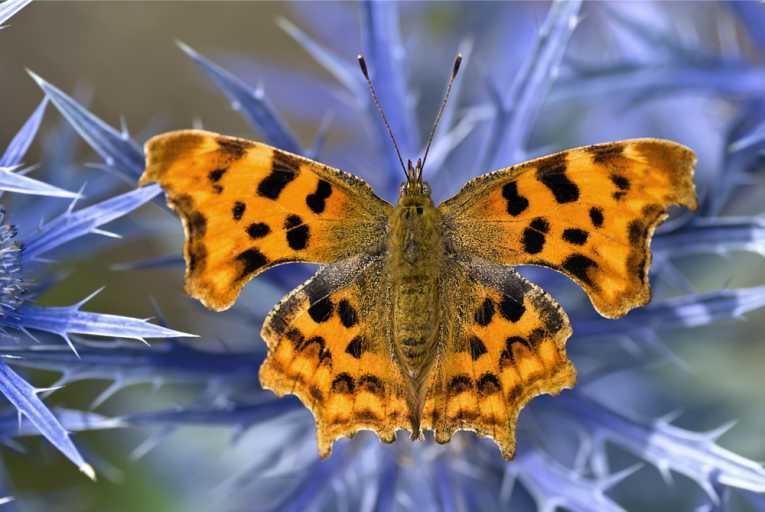The Red Book tells us how much trouble our favourite mammal or bird is really in. For fish and insects and even worse, if you're a Pogonophoran, there is little information. Britain's butterflies are few in species to start with, but much loved, as opposed to their poor neighbours the moths and microlepidoptera. Report after report tells us almost as much as those on bird migrants or the ever-popular red squirrel.
"We probably know more about British butterflies than any other insect group in the world. They've been studied intensively. And what we can say is that what's happening to British butterflies indicates what's happening to insects and other invertebrate groups elsewhere," says Richard Fox from Butterfly Conservation, lead author of this third study of British Butterfly distribution.. So instead of indicator butterflies to show us the state of natural Britain, perhaps we should read this report as a fairly accurate guide to what's also happening to hedgehogs, snails, orchids as well as all those other arthropods.
The report from Butterfly Conservation, by Fox, R., Brereton, T.M., Asher, J., Botham, M.S., Middlebrook, I., Roy, D.B. and Warren, M.S. 2011, is entitled The State of the UK's Butterflies 2011, and states that half of the species increased in either distribution or population, but 75% declined in either measure. Confusing as that figure may be, long-term decline, as reported in 1997 and 1987 is probably much more serious than in other threatened groups such as dragonflies and several birds. There are actually only 62 species in this part of north-west Europe, compared to 440 in the whole of Europe, or 679 in the US, but we had a 25% decline in the numbers of common and widespread species such as the Small Tortoiseshell:

The Vanessid Small Tortoiseshell, beloved of gardeners, but becoming scarce in some areas via Shutterstock
Standing beside the usual regional and overall problems for rare butterflies, there have been at least two successes over this first decadal report. Conservationists have been extremely active with habitat restoration and breeding campaigns. The Small Blue and the Marsh Fritillary have been conserved and increased accordingly. The Large Blue has been reintroduced and developed 20 new colonies since the 1980s, while at the other end of the scale, successful species have spread north to compete with the previous abundance of the Small Tortoiseshell. Look out for the Peacock, Comma, Speckled Wood and Ringlet in areas where they have been uncommon.
The two biggest losers, because of habitat loss or fragmented distribution, are the High Brown Fritillary and the Duke of Burgundy Fritillary. Their Red Book status is critically endangered. The Report points out that even in the north (Yorkshire), a successful project with the Duke of Burgundy Fritillary has contained habitat loss and enhanced numbers before the radical post-extinction procedure that were necessary to bring back the Large Blue. More reports are now needed on our declining wildlife in these overcrowded islands. The need seems to be to check whether the indicative butterflies really do show the path we need to tread, to gain and sustain, rather than abuse and lose.

The Duke of Burgundy Fritillary, flying successfully in North Yorkshire via Shutterstock










